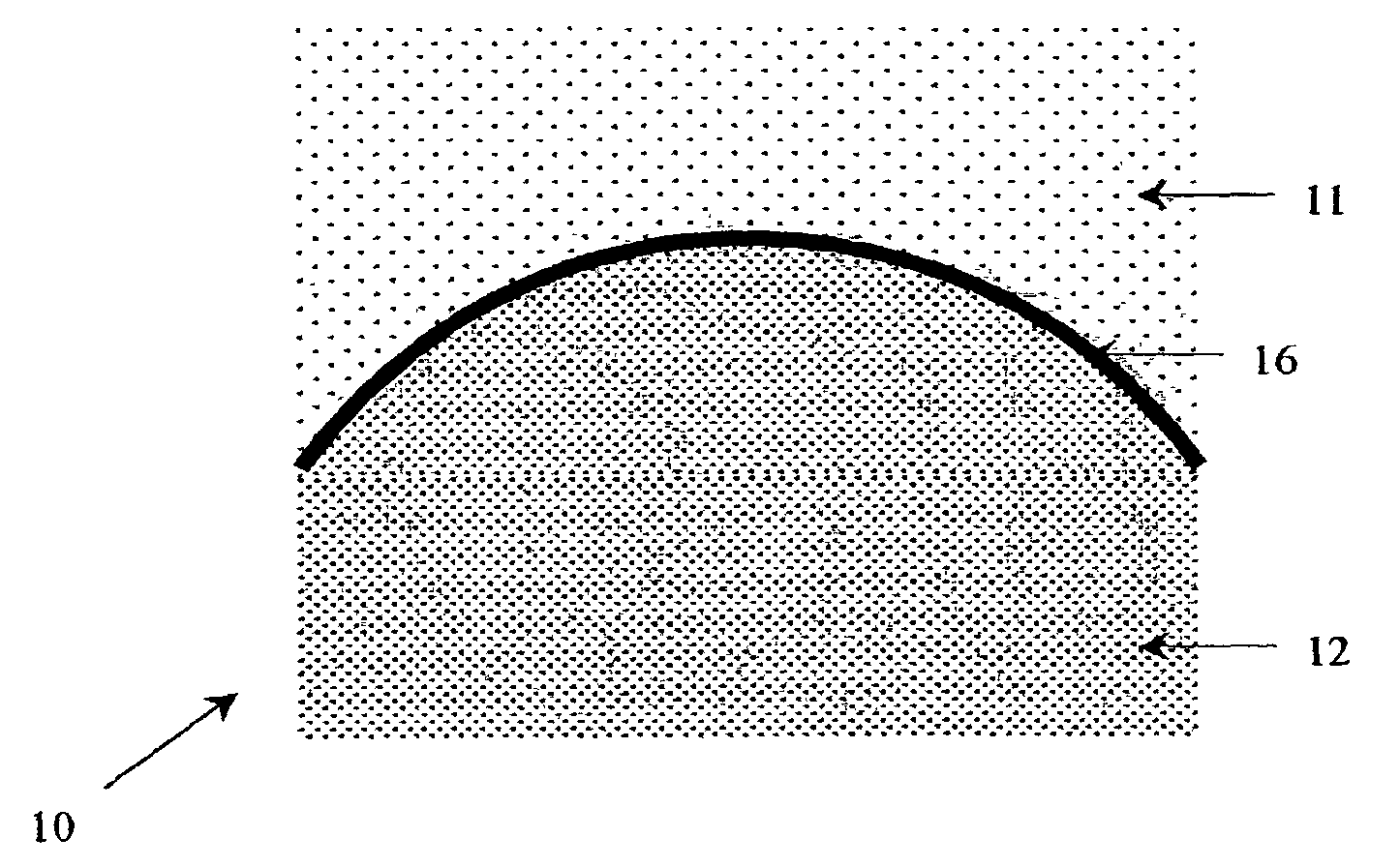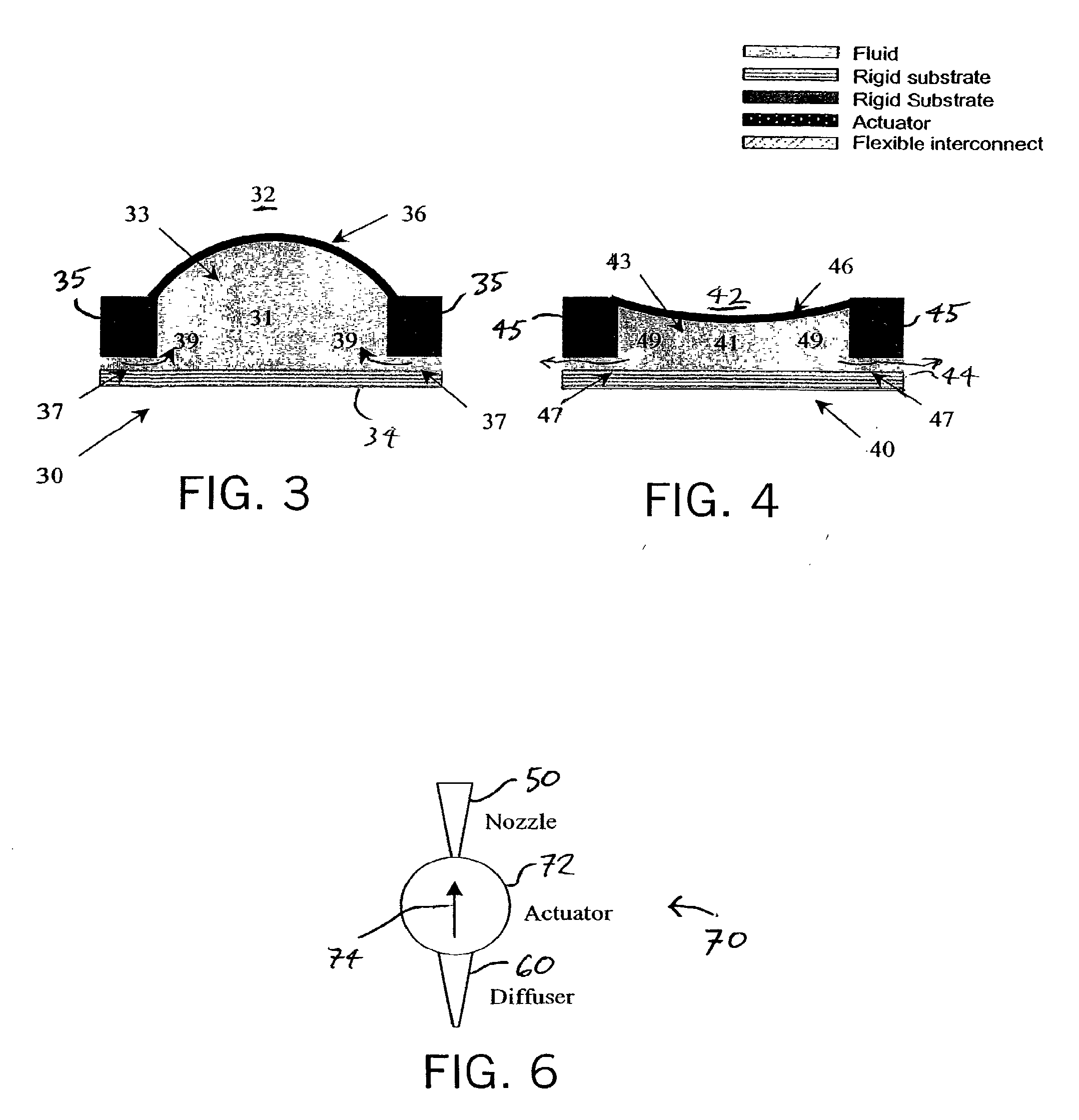Fluidic Adaptive Lens Systems with Pumping Systems
a technology of adaptive lens and pumping system, applied in the field of optic lenses, can solve the problems of inability to mass produce at low cost, disadvantageous solid material lenses, and inability to meet the needs of mass production, and achieve the effect of less weight or bulkiness, and rapid
- Summary
- Abstract
- Description
- Claims
- Application Information
AI Technical Summary
Benefits of technology
Problems solved by technology
Method used
Image
Examples
Embodiment Construction
[0028]Referring to FIGS. 1-4, cross-sections of exemplary fluidic adaptive lenses are shown in schematic form. As particularly shown in FIG. 1, a first fluidic adaptive lens (or simply fluidic lens) 10 is a convex lens that includes a first medium 12 that is a higher index fluid, a second medium 11 that is a lower index fluid, and a flexible membrane or diaphragm 16 that separates the two media. The flexible membrane 16 is bent toward the side of the second medium 11 (the lower index side) as shown due to the pressure of the first medium 12 being greater than that of the second medium (plus some minimal pressure exerted by the membrane itself). In contrast to FIG. 1, FIG. 2 shows a second fluidic lens 20 that is a concave lens that includes a first medium 22 that is a higher index fluid, a second medium 21 that is a lower index fluid, and a flexible membrane (or diaphragm) 26 that separates the two media. The membrane 26 in contrast to the membrane 16 is bent toward the side of the ...
PUM
 Login to View More
Login to View More Abstract
Description
Claims
Application Information
 Login to View More
Login to View More - R&D
- Intellectual Property
- Life Sciences
- Materials
- Tech Scout
- Unparalleled Data Quality
- Higher Quality Content
- 60% Fewer Hallucinations
Browse by: Latest US Patents, China's latest patents, Technical Efficacy Thesaurus, Application Domain, Technology Topic, Popular Technical Reports.
© 2025 PatSnap. All rights reserved.Legal|Privacy policy|Modern Slavery Act Transparency Statement|Sitemap|About US| Contact US: help@patsnap.com



